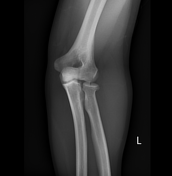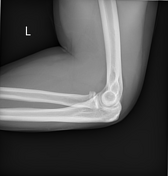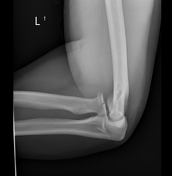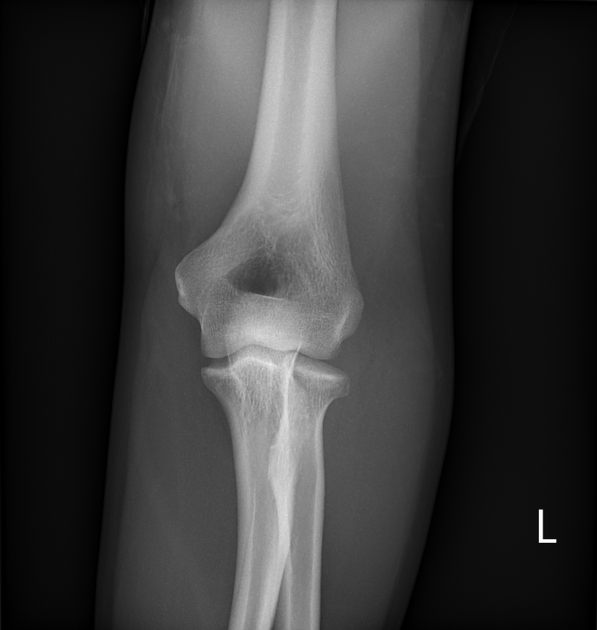Presentation
Fall onto left elbow. Tender and swollen.
Patient Data
Age: 20 years
Gender: Male
From the case:
Radial head fracture




Show annotations
Download
Info

There is an intra-articular fracture of the radial head, causing a step deformity of the articular surface of less than 2 mm. This describes a Mason type I fracture.
On the lateral view, elevation of the anterior fat pad (sail sign) and a prominent visible posterior fat pad suggest elbow joint effusion - favored to be hemarthrosis.
No other fracture is identified.
Case Discussion
Mason type I radial head fractures are generally managed conservatively.
A collar and cuff sling was applied and the patient advised to present for clinic review in one week to evaluate for any mechanical block to range of motion, which would be an indication for operative management with ORIF.